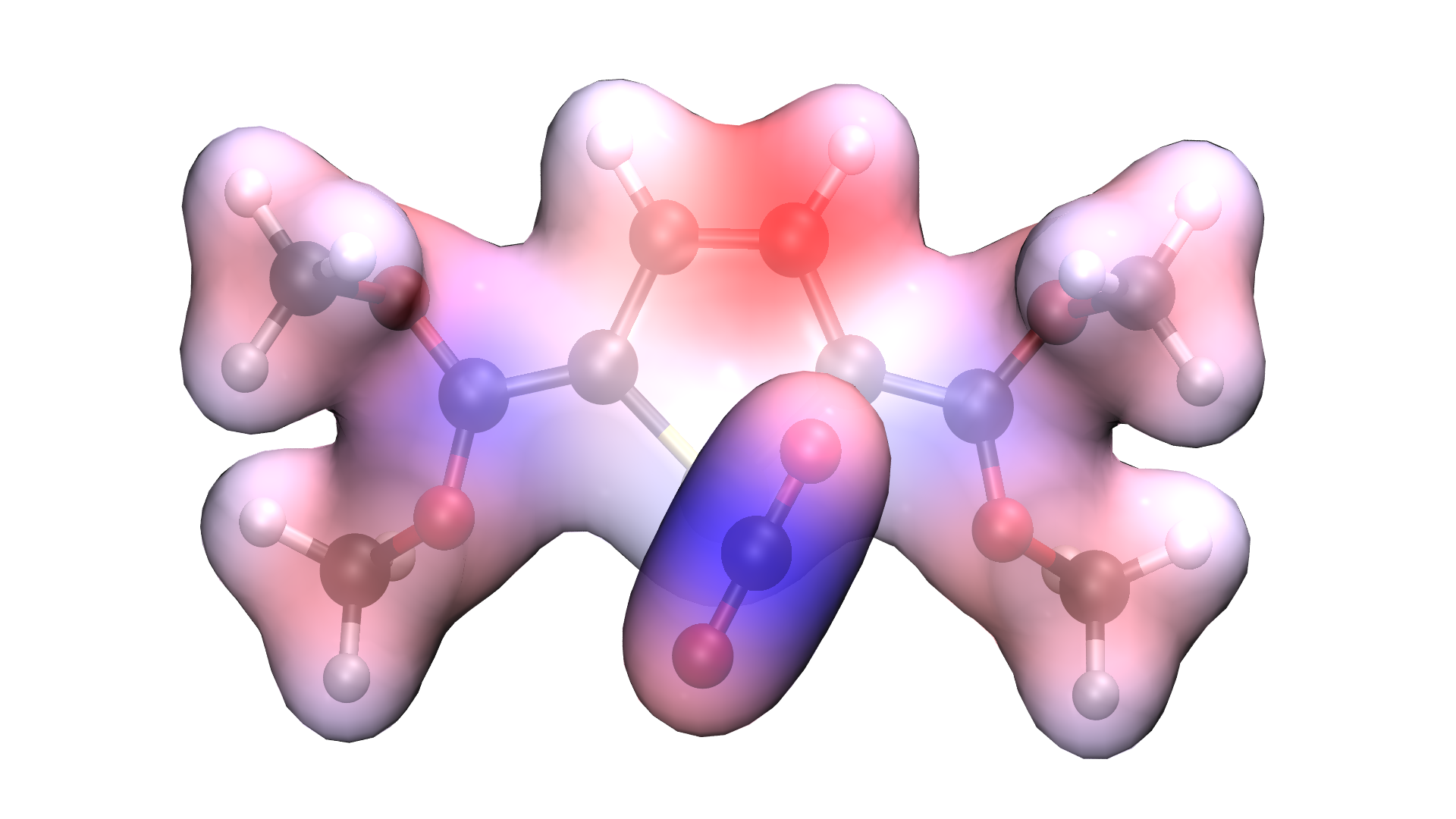Research projects
I am no longer actively working on any research projects but always happy to talk about previous work.
Quantum chemistry calculations of solutes in aqueous solutions
Employing QM/EFP (Quantum Chemistry/ Effective Fragment Potential) techniques to calculate electronic structures and properties of aqueous solution
- Using molecular dynamics simulations to sample an ensemble of conformations of the solute in water
- Calculating ionisation energies and electronic excitation energies using software packages such as Firefly and QChem with hybrid QM/EFP techniques
- Calculating upon solutes such as photoactive protein chromophores and their subunits
Photoelectron spectroscopy of photoactive protein chromophore anions
Employing frequency-resolved photoelectron spectroscopy and quantum chemistry calculations to determine the electronic structure and dynamics of anions in the gas phase with UV photons
- Investigating the importance of torsional motions within the photoactive yellow protein by the comparing the photoelectron spectra and theoretical results of the native chromophore to those with molecular tethers - see publication 4
- Determining the role of double bond rotation (isomerisation) in the electronic structure and dynamics of the photoactive yellow protein chromophore, a protein chromophore that isomerises following the absorption of light initiating the photoresponse - see publication 7
- Contributing to studies on chromophore building blocks pertinent in photoactive protein chromophores with quantum chemistry calculations of detachment energies, electronic excitation energies and anisotropy parameters - see publications 6, 9 and 11
See our review, publication 8, DOI: 10.1080/0144235X.2018.1548807
Computational screening of functional groups in metal organic frameworks aimed at gas sorption
- Calculating binding energies between small clusters of functionalised benzene and methane bound by weak hydrogen bond-like interactions - see publication 1
- Comparing heterocyclic linker fragments to their carbocyclic counterparts and investigating the effect of linker length by calculating binding energies of small clusters of such linkers with methane or carbon dioxide molecules - see publication 2
- Contributing to larger projects with small-scale full quantum chemistry calculations to provide insight on important functionalities within a metal organic framework or to compare to large-scale Monte Carlo simulations of gas-sorption - see publications 3 and 5
This work was done during my undergraduate degree under the supervision of Prof Elena Besley at the University of Nottingham. For more information on this project, see the group's website
Bibliography
-
A photoelectron imaging study of the deprotonated GFP chromophore anion and RNA fluorescent tags
J. L. Woodhouse, A. Henley, R. Lewin, J. M. Ward, H. C. Hailes, A. V. Bochenkova and H. H. Fielding, Phys. Chem. Chem. Phys., 2021, 23, 19911-19922, DOI - Shining light on the electronic structure and relaxation dynamics of the isolated oxyluciferin anion
A. M. Patel, A. Henley, M. A. Parkes, M. Assmann, G. A. Worth, J. C. Anderson and H. H. Fielding, Phys. Chem. Chem. Phys., 2020, 22, 19022-19032, DOI - An experimental and computational study of the effect of aqueous solution on the multiphoton
ionisation photoelectron spectrum of phenol
A. Henley, J. W. Riley, B. Wang and H. H. Fielding, Faraday Discuss., 2019, 221, 202-218, DOI - A photoelectron imaging and quantum chemistry study of phenolate, difluorophenolate and
dimethoxyphenolate anions
J. L. Woodhouse, A. Henley, M. A. Parkes and H. H. Fielding, J. Phys. Chem. A, 2019, 123, 2709-2718, DOI - Anion photoelectron spectroscopy of protein chromophores
A. Henley and H. H. Fielding, Int. Rev. Phys. Chem., 2019, 28, 1-34, DOI - The role of photoisomerisation on the photodetachment of the photoactive yellow protein chromophore
A. Henley, A. M. Patel, M. A. Parkes, J. C. Anderson and H. H. Fielding, J. Phys. Chem. A, 2018, 122, 8222-8228, DOI - A photoelectron imaging and quantum chemistry study of the deprotonated indole anion
M. A. Parkes, J. Crellin, A. Henley and H. H. Fielding, Phys. Chem. Chem. Phys., 2018, 20, 15543-15549, DOI - Enhancement of CO2 uptake and selectivity in a metal-organic framework by the
incorporation of thiophene functionality
V. A. Bolotov, K. A. Kovalenko, D. G. Samsonenko, X. Han, X. Zhang, G. L. Smith, L. J. McCormick, S. J. Teat, S. Yang, M. J. Lennox, A. Henley, E. Besley, V. P. Fedin, D. N. Dybtsev and M. Schröder, Inorg. Chem., 2018, 57, 5074–5082, DOI - Electronic structure and dynamics of torsion-locked photoactive yellow protein chromophores
A. Henley, M. E. Diveky, A. M. Patel, M. A. Parkes, J. C. Anderson and H. H. Fielding, Phys. Chem. Chem. Phys., 2017, 19, 31572-31580, DOI - The right isotherms for the right reasons? Validation of generic force fields for prediction of
methane adsorption in metal-organic frameworks
M. J. Lennox, M. Bound, A. Henley and E. Besley, Mol. Simul., 2017, 43, 828–837, DOI - Computational evaluation of the impact of incorporated nitrogen and oxygen heteroatoms on the
affinity of polyaromatic ligands for carbon dioxide and methane in metal-organic frameworks
A. Henley, M. J. Lennox, T. L. Easun, F. Moreau, M. Schroder and E. Besley, J. Phys. Chem. C, 2016, 120, 27342–27348, DOI - Effective binding of methane using a weak hydrogen bond
A. Henley, M. Bound and E. Besley, J. Phys. Chem. A, 2016, 120, 3701-3709, DOI



